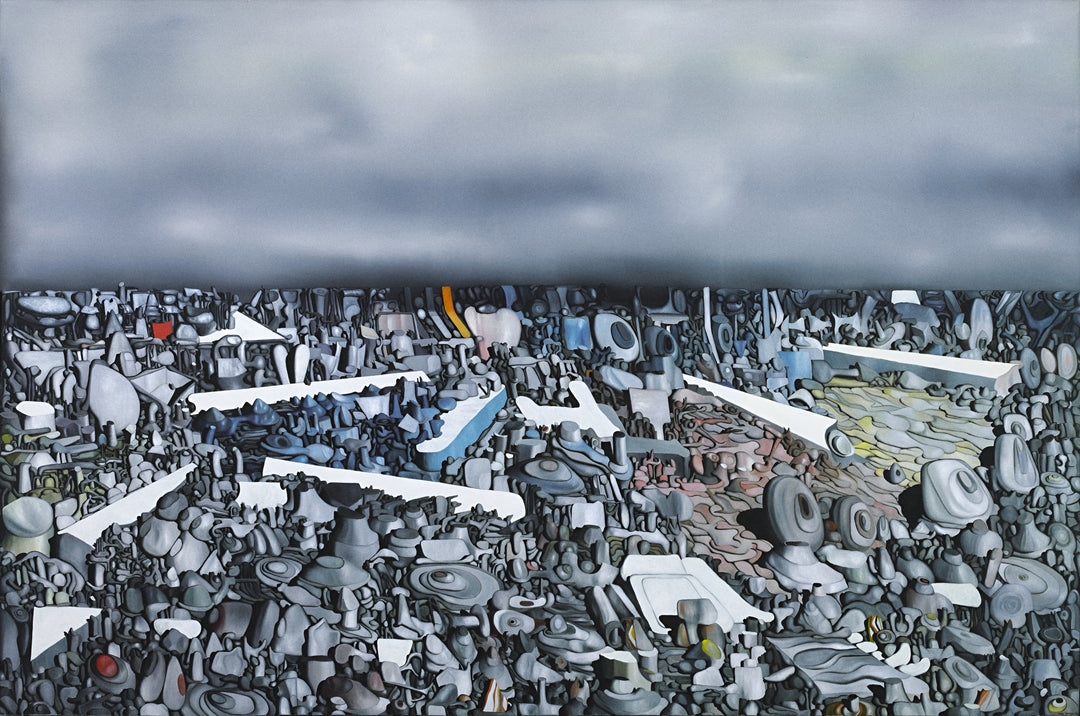
Multiplication of Arches - Yves Tanguy
| Author: | Yves Tanguy |
|---|---|
| Title: | Multiplication of Arches |
| Original location: | Museum of Modern Art, New York, USA |
| Year: | 1954 |
In 1954, Yves Tanguy created "Multiplication of the Arches," a work that synthesizes the evolution of his surrealist language in the last years of his life. From his studio in the United States, Tanguy continued to construct landscapes devoid of earthly references, where light, matter, and gravity seem to operate under their own laws. In this painting, the forms evoke arched structures that repeat and fragment like echoes on an infinite horizon, challenging the perception of time and the logic of perspective.
The idea of "multiplication" suggests a continuous process of formation and transformation, as if the landscape were caught in infinite expansion. The color palette of cool tones and softened ochers creates an ethereal atmosphere, while sharp outlines and diffuse shadows generate a three-dimensional effect that reinforces the dreamlike sense of depth. These arched structures can be interpreted as remnants of organic forms in the process of metamorphosis.
Surrealism, the movement to which this work belongs, emerged after Dadaism, but while the Dadaists challenged the meaning of art with absurdity and irony, the Surrealists sought to access the deepest spaces of the unconscious. Tanguy was one of the few Surrealist artists who, instead of depicting narrative scenes, explored a universe of autonomous forms that seemed to obey their own laws, like evolutionary organisms in an alternate world.
Unlike Dalí, whose work was based on recognizable images deformed by dreams, or Miró, who simplified figuration to the symbolic, Tanguy created a purely abstract language, where form and light functioned as a visual grammar of the subconscious. His influence would extend beyond Surrealism, reaching Abstract Expressionism, particularly in the work of Mark Rothko, who would find in the layering of chromatic glazes a vehicle for emotional introspection.
In this work, structural repetition can be seen as a reflection of time and memory, where each form is a variation of the previous one, like a melody that repeats with slight alterations. Painted in the last years of his life, this piece encapsulates Tanguy’s obsession with the infinite, the unattainable, and the eternal, confirming that in art, as in human thought, there is always a structure that multiplies and transforms, again and again, moving toward an inevitable end that is not yet in sight.